
THE CENTENNIAL ISSUE
No. 57 (Winter/Spring 2023)
Table of Contents
- Evolution of an Archive
- “Who Knows but a Woman May One Day Preside Here”
- The Threads That Bind Us
- Illuminating Revolutionary War America
- Elegant to Eccentric
- Mysteries of the Deep
- Mapping Research Trends in the Collections
- Recent Acquisitions
- Philanthropy Builds the Archive and is Recorded There, Too
- Announcements — Winter/Spring 2023
- Evolution of an Archive
- “Who Knows but a Woman May One Day Preside Here”
- The Threads That Bind Us
- Illuminating Revolutionary War America
- Elegant to Eccentric
- Mysteries of the Deep
- Mapping Research Trends in the Collections
- Recent Acquisitions
- Philanthropy Builds the Archive and is Recorded There, Too
- Announcements — Winter/Spring 2023
Recent Acquisitions
Manuscripts
The Clements recently acquired the 19-item Crow Creek Agency Collection, focusing on a Native American boarding school in Crow Creek, South Dakota. Included is a program for the 1892 Christmas celebration, which lists songs and recitations performed by the students, providing a glimpse of student life at this boarding school and how American culture was represented and taught.
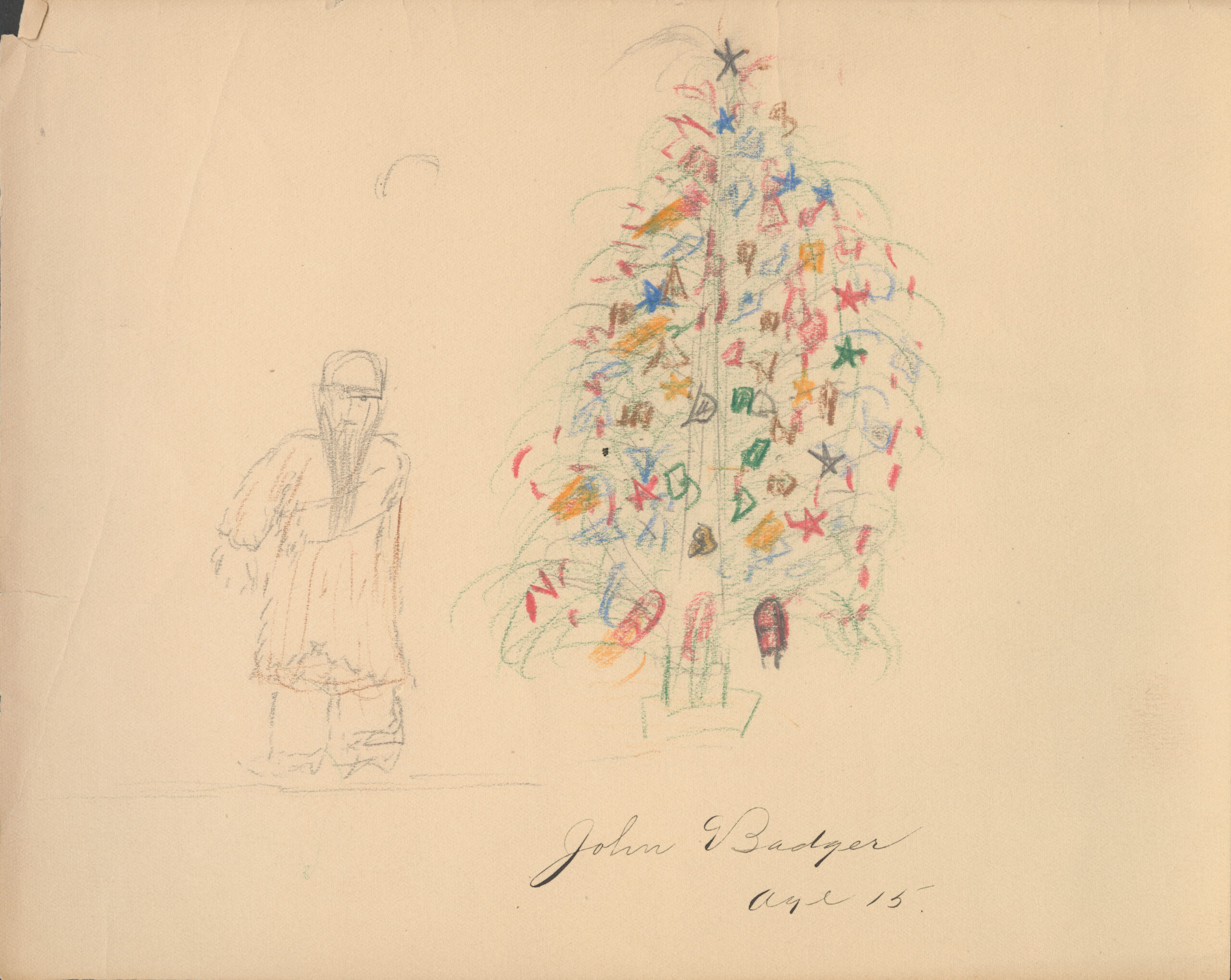
Drawing by Crow Creek boarding school student John Badger, age 15.
Evocative student work accompanies the collection. There are eight letters from students who shared their experiences at the Christmas celebration. Many of them wrote about the presents they received and highlighted the week spent at home with family over the holidays. The collection also includes geometric drawings and collages, examples of how these children expressed themselves in moments of forced cultural assimilation that demonstrate how art can help us think about trauma and its relationship to heritage.
One of the larger recent acquisitions is a collection of papers of Rufus Degranza Pease, including letters, a diary and writings, printed material and more. Pease was a graduate of Willoughby Medical College in 1845, and became an itinerant lecturer on a variety of topics, including astronomy, geology, health, physiognomy, phrenology, and free thought. Following the Civil War, he lectured for the National Association of Christians Opposed to Secret Societies, focusing on Freemasons, Knights Templar, the Odd Fellows, Knights of Pythias, and others. Later in his life he became a doctor of physiognomy in Philadelphia where he resided until his death in 1890.
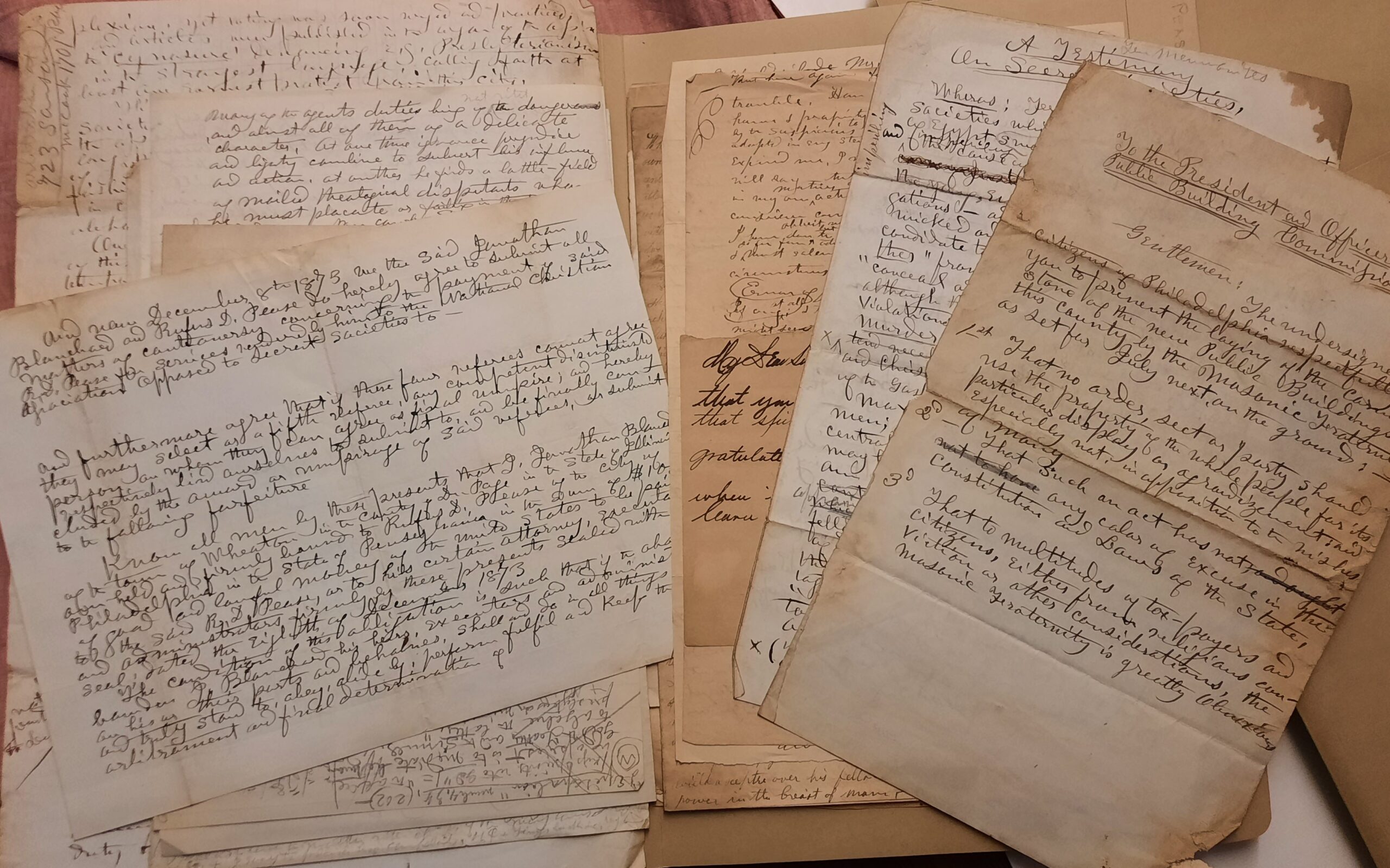
A selection of draft documents from the papers of Rufus DeGranza Pease.
Much of the correspondence to Pease is from fellow peddlers of educational services and instructive lectures in the Midwest. They collaborated and traded information and advice on travel routes, discussed which communities were receptive to their services, and how much could be charged for lectures and classes.
Other letters written by Pease are filled with fury, directed toward Mormons among others. Pease was an abolitionist and anti-slavery advocate, though he raged at Lincoln for the suspension of habeas corpus in 1863. He also believed that he was being persecuted, seemingly somewhat justified by his imprisonments for “seduction and fornication.” He wrote during one imprisonment in October/ November, 1863: “For my part I have seen the hand of Providence in the matter from the first, and cannot doubt that I am bruised for the benefit of your community. No silly and contemptible malicious charge against me of insanity, even though bolstered up by sap headed drug and quack medicine peddlers of Berlin [Wisconsin] as elsewhere, will avail against the true and right…The charges they had diligently circulated for months about me were fornication, even going so far as to specify a person, and also seduction. But finding they could make no headway in that direction immediately commenced to cuttlefish under a wholesale and cold-blooded charge against me, even to indict me of partial, if not entire insanity.”
During his later years in Philadelphia, Pease earned money by providing phrenological and physiognomical advice. He conducted a mail order business, soliciting letters from clients, which arrived with enclosed photographs, posing questions such as: Will I be a good candidate for the priesthood? What type of career should I pursue? For the exorbitant fee of $10, Pease would provide answers by return mail, presumably based on physical characteristics exhibited in the photographs.
Printed materials include the only issue that Pease ever produced of the Journal of Man, published by Rentoul in Philadelphia in 1872, as well as a variety of lecture and course advertisements, synopses and tickets, flyers, and circulars.
Books
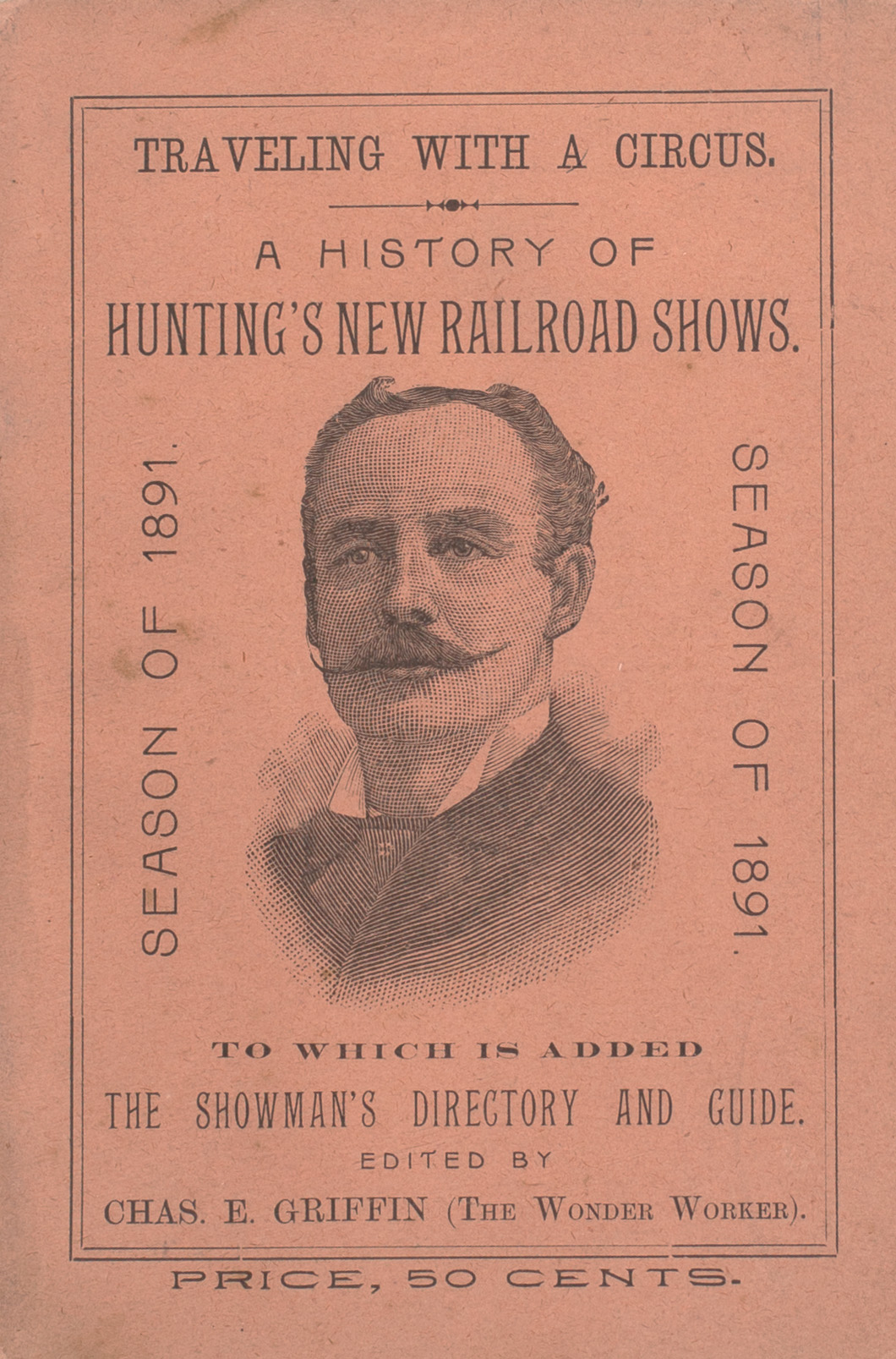
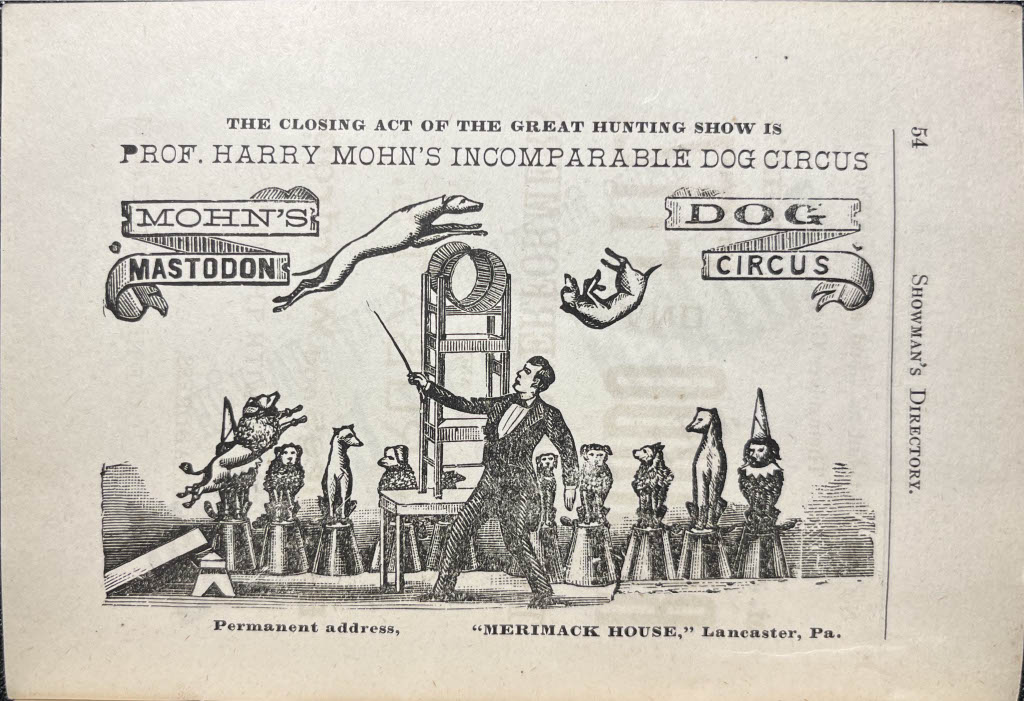
The route book for 1891 features a cover portrait assumed to be Robert Hunting (ca. 1842–1902), “Sole Proprietor and Manager” of Hunting’s New Railroad Shows.
New to the Book Division are three pamphlets related to Hunting’s New Railroad Shows, or Hunting’s New United Monster Railroad Shows, a circus traveling by rail car to locations around the United States. The pamphlets are referred to as route books and contain accounts of the seasons of 1891, 1892, and 1894. Each route book starts out with a list of the performers and support staff who traveled with the circus, including: cooks; musicians and other performers; an advance team that traveled ahead to take care of the advertising and to set up the tents; and caretakers for the animals, among others. The heart of each pamphlet is the “Author’s Diary,” comprised of snapshots of stops on the season’s itinerary, recording the location, the population of the towns, the railroads taken to get there, the weather, and any notable events. The financial success of the show is often noted—“bad business,” “fair business,” “good business,” or “big business” (the maligned Easton, Pa. keeps up its reputation of being a “‘bum show town”). The entries provided vivid accounts of the challenges of managing a traveling circus—wrangling people, equipment and animals; the sometimes gruesome injuries sustained by performers; railroad mishaps; and the revolving-door entrance and exodus of performers along the way.
An example from 1892:
Brewsters, N.Y., May 31.— First real
“circus day” of the season. During
the parade this morning a wild bull
made his appearance and stampeded our lady and gentlemen
riders. Prof. Mohn led the enraged
beast a wild chase down a narrow
alley, and Jeanne Earle created a
sensation by making a daring leap
for life from the back of her fiery
steed to terra firma. Where the beast
came from or where he went is an
unsolved mystery. This is the home
of a great many retired showmen.
Mr. Henry Barnum, who is now
connected with the Forepaugh
Show; Mlle. De Granville (Mrs. Dr.
Knox) and Lew Baker, an old time
boss canvas-man, were visitors.”
One of the acts advertised in the 1891 guide was “Professor” Harry Mohn’s dog circus. Mohn was featured in an entry describing an eventful stop in Pennsylvania: “A Duncannon loafer stole one of Prof. Mohn’s trick dogs after the night show, but Harry succeeded in getting the dog back before he left town. Harry Smith was kicked in the groin by a tough. It will lay him off for several days.”
Two of the pamphlets include a “Showman’s Directory and Guide,” compiled annually. The Directory listed contact information for performers and service providers who might be needed by a traveling show. If you required new balloons, or ran out of circus lights, or were in need of canvas, magic lanterns, or a taxidermist, contact information is available! There are listings for engravers, lithographers, printers, tightrope walkers, clowns, jugglers, and musicians—the panoply of services required to keep the show on the road. The collection reveals the cooperation that existed among similar outfits, who traded information and provided mutual support.
Also recently acquired, A Key to English is a textbook produced by Ceta Ryan to help Japanese immigrants in California learn English. An imprint from 1906 San Francisco is a rarity in itself, given the earthquake and subsequent fire which burned much of the city. But the volume is interesting in several other aspects. The text is printed in both English and Japanese, which was a complicated task for the printing technology of the era. Information inside the back cover indicates that this book was owned by someone who spent time in the internment camp in Poston, Arizona, during World War II, revealing that it had a fairly long life in readers’ hands and somehow wound up in a carceral setting.
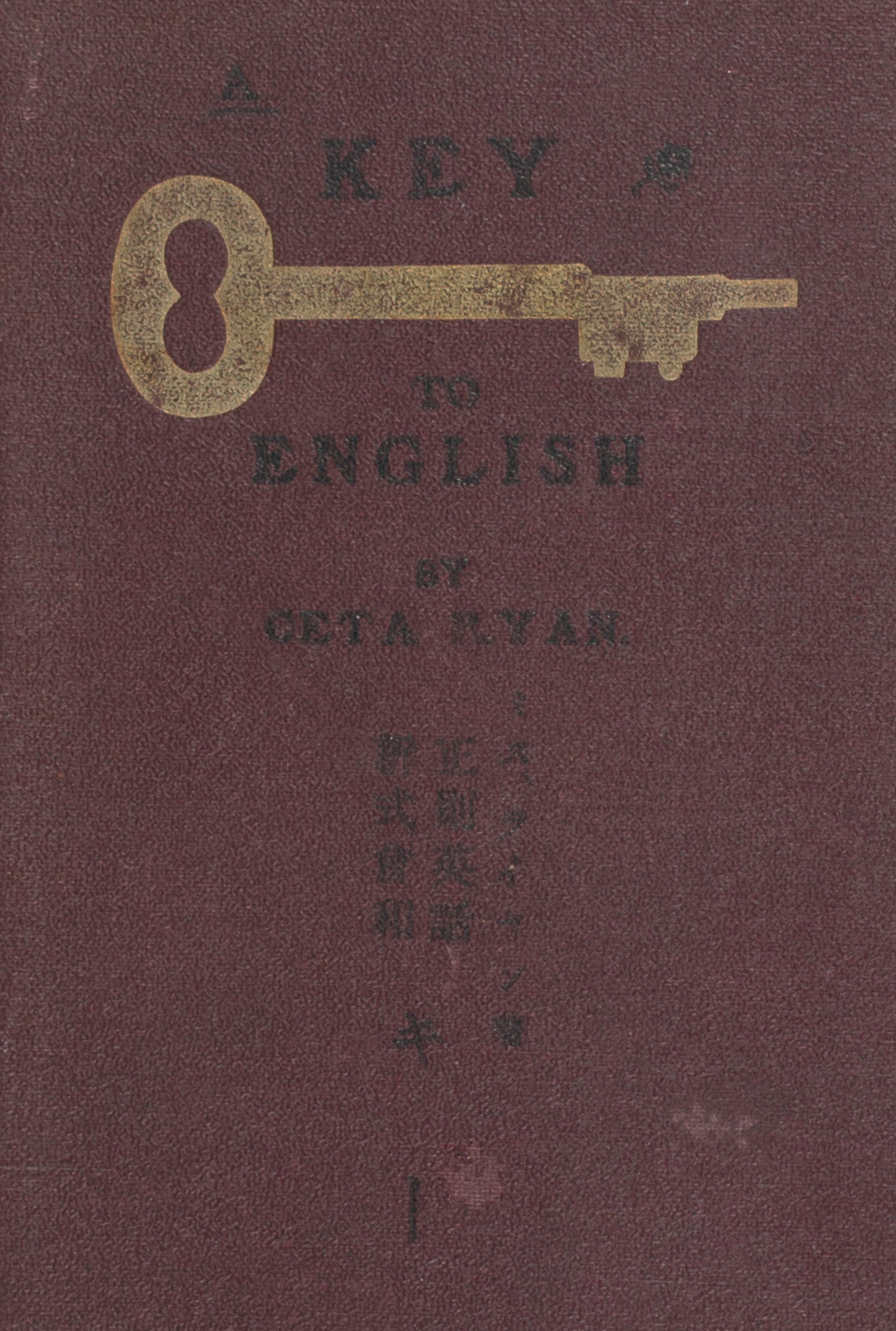
Little is known of the author of A Key to English. Census records list a woman named Ceta Ryan (born ca. 1865), a private teacher residing in San Francisco as late as 1940 along with a lodger born in Japan. We have no information about the owners of the volume, or who penciled the inscription on the inside back cover.
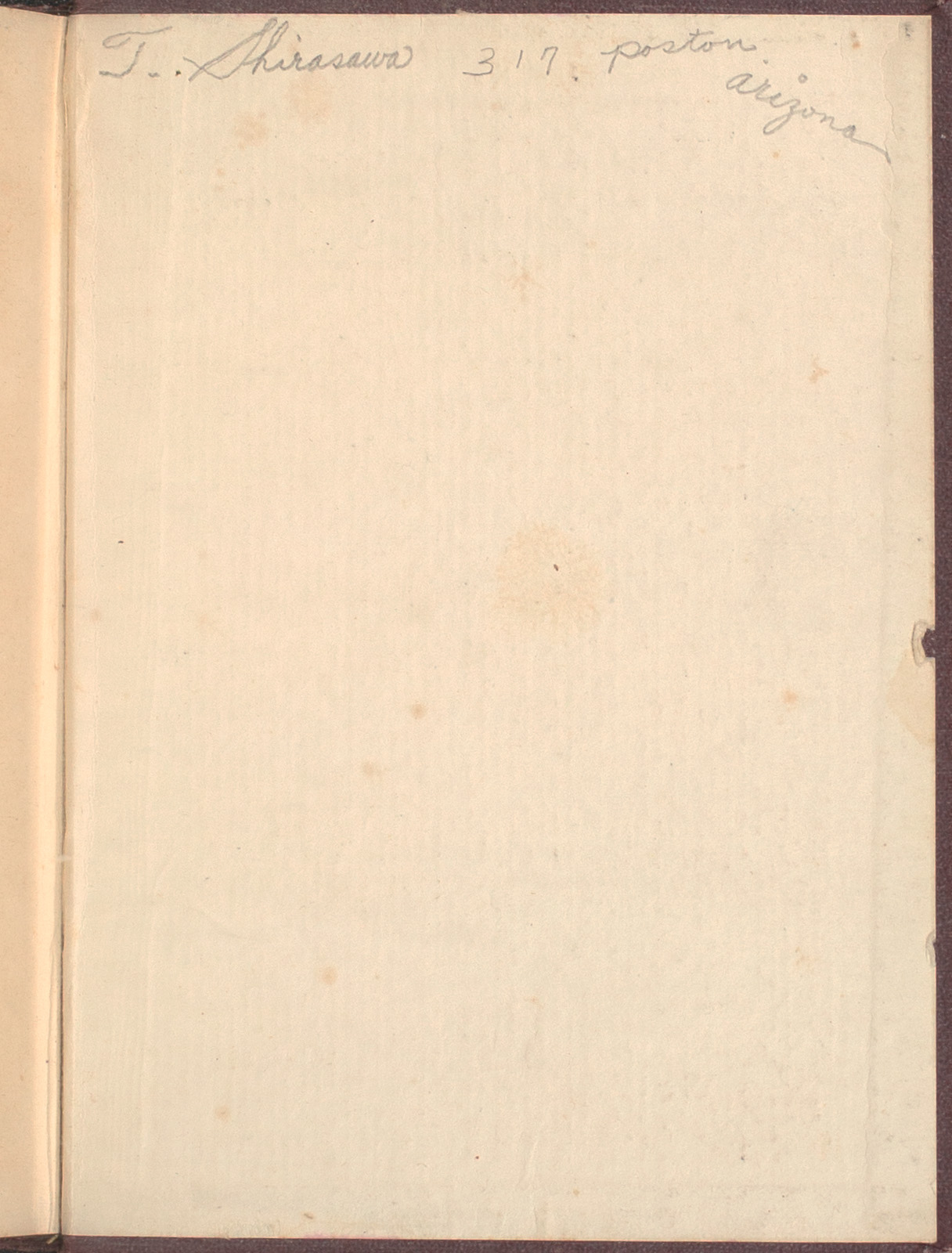
Books
Recently arrived in the Graphics Division’s growing collection of ephemera, is a fascinating tiny redware souvenir—measuring 3.5 cm—made to look like a soldier’s canteen and to commemorate the Battle of Gettysburg. On one side is affixed a photograph of a woman named Jenny Wade, who lived in Gettysburg with her mother and was killed during the battle on July 2, 1863. Wade and her mother lived in the middle of the town of Gettysburg, and when the fighting started, moved to the home of a relative. One morning while Wade was kneading dough to make bread for Union soldiers, a Confederate unit began firing at the house. A musket ball passed through the door and killed her. Famously, the day after her daughter died, her mother finished baking the bread that her daughter had started when she was shot and killed, and gave it to the Union soldiers to feed them.
And on the other side of the souvenir is a picture of a man named John Burns, another famous civilian folk hero of Gettysburg. While Burns was almost 70 when the battle began, he was eager to fight with the Union soldiers whom he admired. Burns left his house with an old musket, a top hat, and frock coat and joined in with a Union regiment marching by. He borrowed a rifle from a wounded soldier and fought throughout the Battle of Gettysburg with several different units. Burns was wounded several times, and he achieved fame as a volunteer civilian who pitched in to help the Union cause.
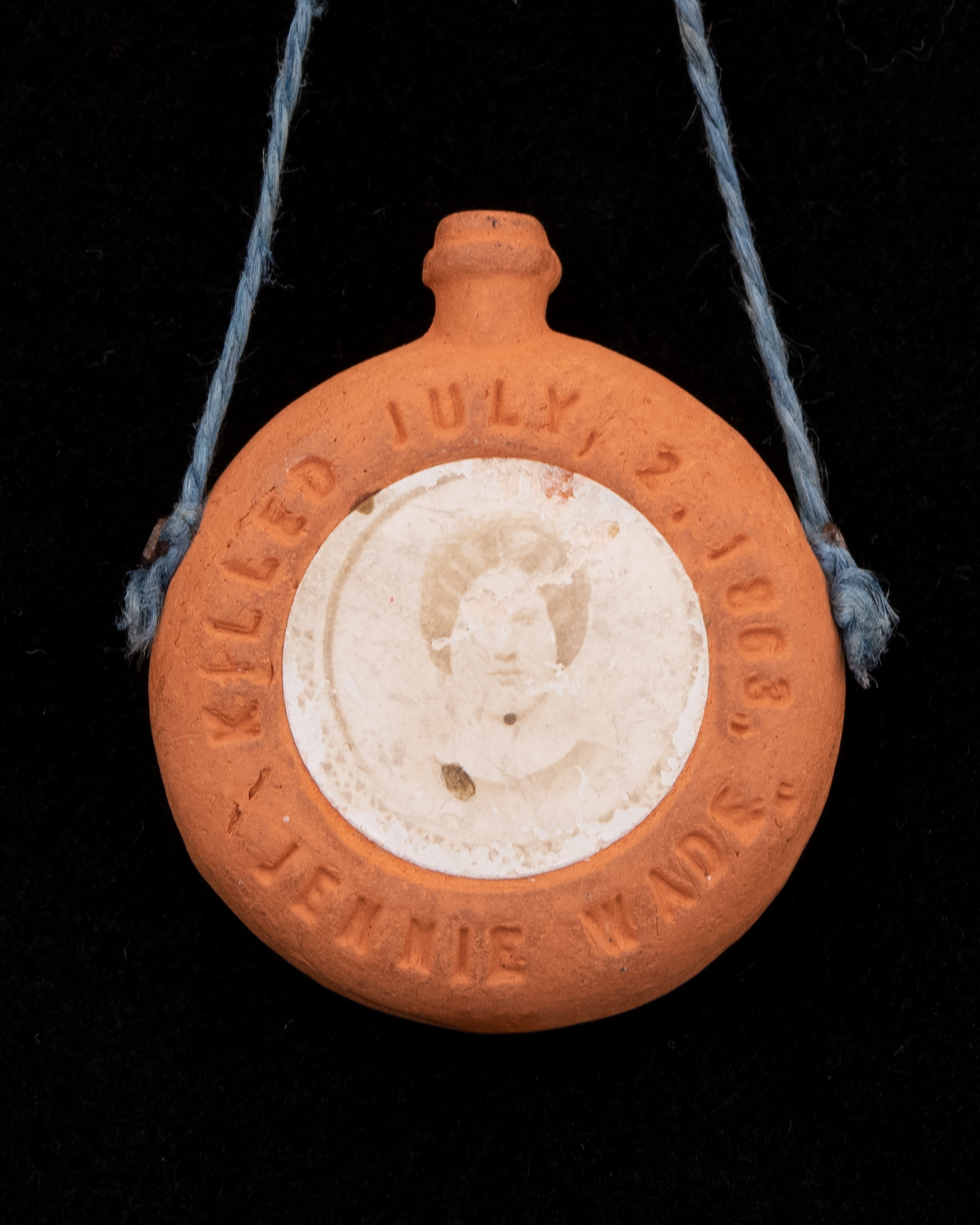
The large amount of iron oxide present in the clay used for redware gives the unglazed earthenware its striking color.

Next is a group of five photographs from the Montana Industrial School for Indians, a boarding school in west central Montana, about an hour or so west of Billings. Unitarian Universalists opened the school in 1886, and it operated for a decade before the federal government discontinued funding and it was forced to close. These evocative images are of the students, who were mostly Crow Indians.
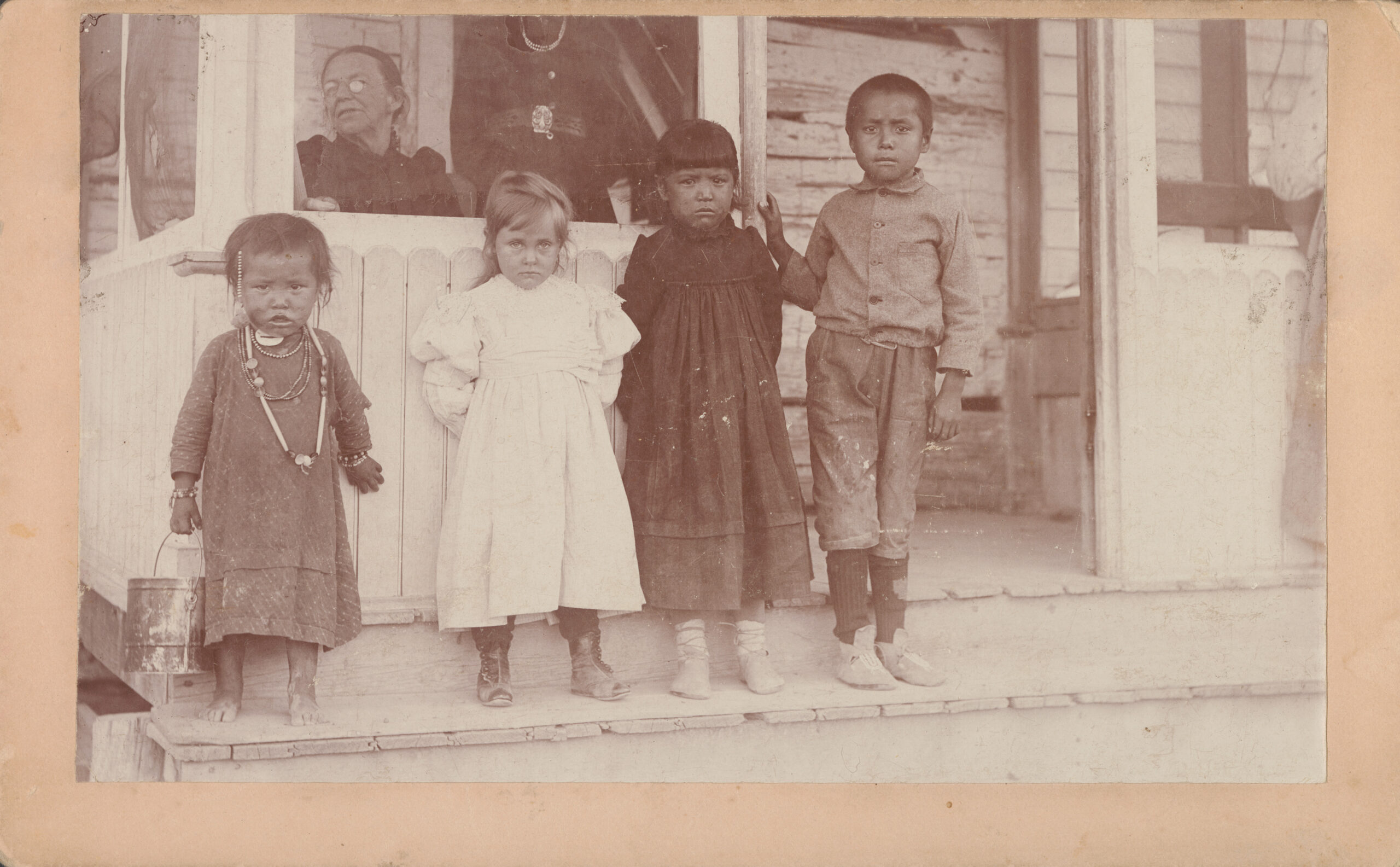
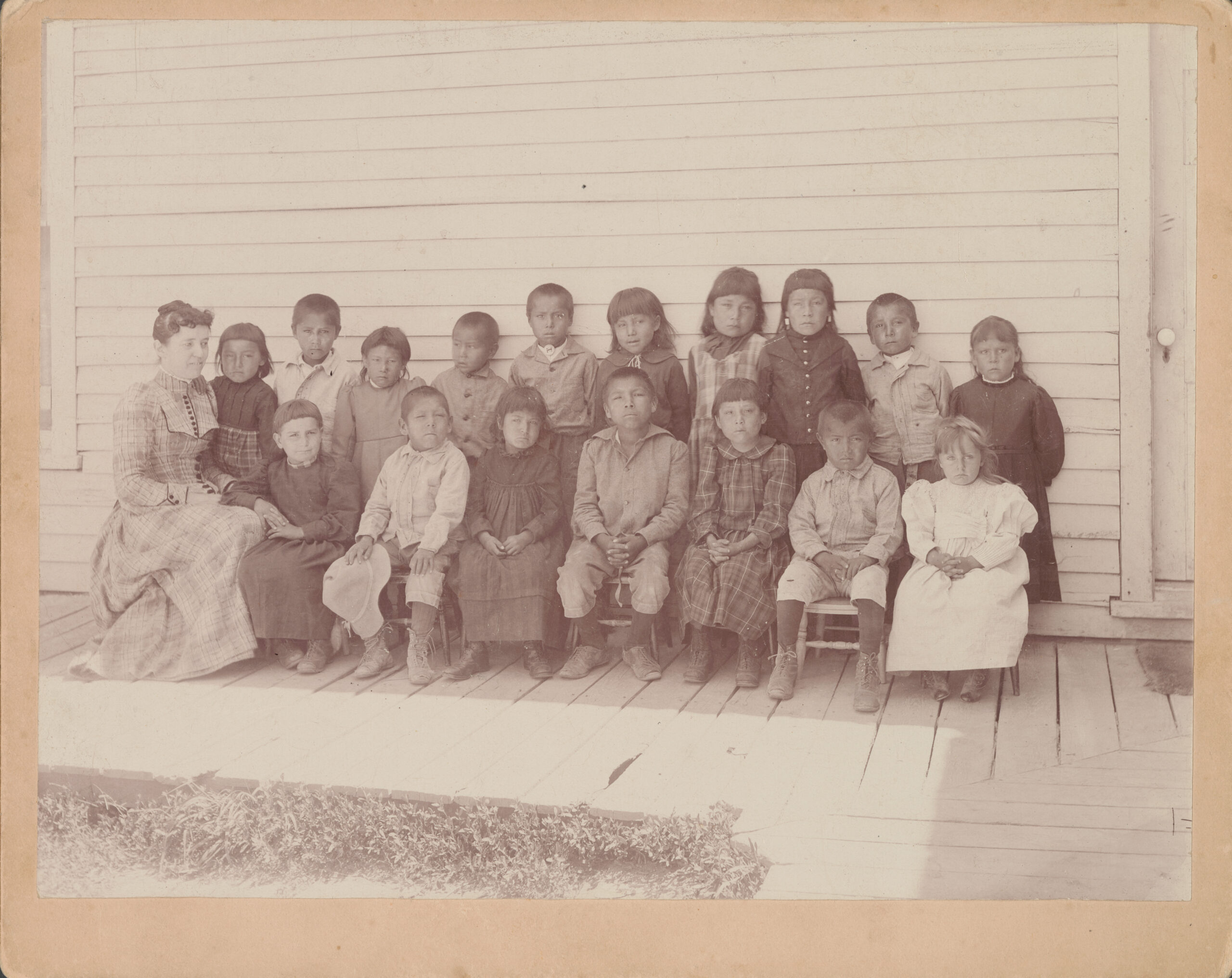

Looking closely at details of these photos, one can spend time noticing the children’s expressions and reflecting on their experiences.
- Evolution of an Archive
- “Who Knows but a Woman May One Day Preside Here”
- The Threads That Bind Us
- Illuminating Revolutionary War America
- Elegant to Eccentric
- Mysteries of the Deep
- Mapping Research Trends in the Collections
- Recent Acquisitions
- Philanthropy Builds the Archive and is Recorded There, Too
- Announcements — Winter/Spring 2023
